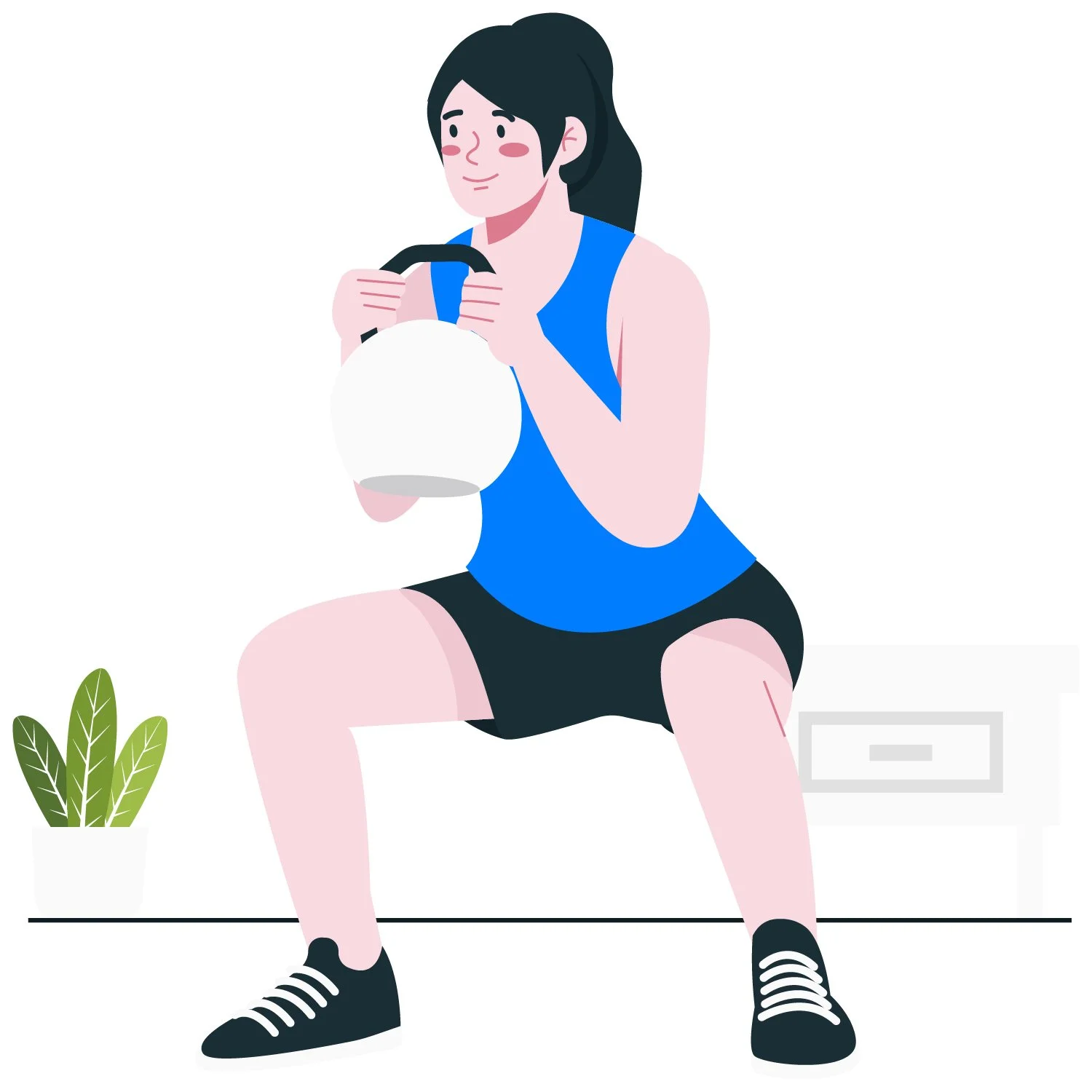When you think of a strong core, do you imagine six-pack abs? We view the core not as a single sheet of muscle but as a 360-degree cylindrical powerhouse essential for movement, balance, and, most critically, spinal health. Your core is the nexus that connects your upper and lower body. Its primary job is not to move you, but to stabilize you—to resist forces that attempt to bend, twist, or buckle your spine. And kettlebells are a great tool for strengthening your core.
The right kind of awkward
The humble kettlebell, with its offset center of gravity, is arguably the most effective single tool for building the kind of anti-rotation and stability that protects your spine and enhances every movement you make—from lifting groceries to improving your running gait.
Traditional core exercises often isolate muscles (think crunches or leg raises). While these have their place, they do not train the core for its real-world purpose: coordinating the entire body under dynamic load.
The kettlebell's design instantly changes the nature of any exercise, forcing your core stabilizers to engage more deeply. Here is the science behind its unique effectiveness.
The unstable center of gravity
Unlike a dumbbell, where the weight is distributed evenly across the hand, the kettlebell's weight rests outside the handle. This creates an inherent instability, or leverage disadvantage, that forces your core muscles to fire reflexively just to keep the bell balanced.
For example, when performing a simple carry:
With a dumbbell: The load is easy to manage and the core engages only moderately.
With a kettlebell: The weight pulls the hand and arm slightly off-center. To prevent your spine from bending laterally (sideways) or twisting, your deep obliques, quadratus lumborum (QL), and transverse abdominis (TA) must engage with maximum effort. This kind of anti-lateral flexion and anti-rotation is the definition of functional core strength.
The kettlebell is purposefully designed to create a known, reproducible mechanical disadvantage. It’s awkward but predictably so. In contrast, a backpack or a laundry basket is "awkward" due to its shifting, disorganized mass. Practicing with a kettlebell, you’ll be in better shape to move day-to-day objects throughout your life.
Integration of the kinetic chain
Kettlebell training is fundamentally full-body. Even an exercise that looks like an arm or leg movement—like a swing or a squat—requires the core to act as a solid link between the ground and the hands. This forces the deep abdominal muscles and the back extensors to work in unison, teaching the body to transfer force efficiently through the hips and trunk. This integrated approach minimizes the isolated strain that can lead to injury.
Foundational kettlebell movements for core strength
We recommend taking a class to get proper instruction, but here’s a quick look at some of the basic moves and their benefits.
1. The goblet squat: Postural integrity
How it targets the core: Holding the kettlebell close to your chest forces your trunk to stay vertical. The slight forward pull of the bell requires constant counter-bracing from your abdominal muscles and back extensors to prevent you from collapsing forward. This trains the same postural awareness we encourage when working on spinal health.
Key takeaway: This movement strengthens the muscles that support an upright spine, providing direct benefits to your standing and sitting posture.
2. The single-arm carry (or farmer’s walk): Anti-lateral strength
How it targets the core: With the bell only in one hand, the load attempts to pull your entire body to that side, causing lateral flexion (side bending). Your core—specifically the oblique muscles on the opposite side of the load—must fight this force every second. This develops true, unilateral anti-side bending strength, which is vital for preventing lower back strain during everyday tasks.
Key takeaway: This trains the deep, stabilizing muscles that keep your hips level and your spine neutral during walking and asymmetrical loading.
3. The kettlebell swing: Power transfer and hip stability
The kettlebell swing is the most well-known exercise and a masterclass in hip hinge mechanics and power transfer—not a shoulder exercise.
How it targets the core: The swing is powered by a powerful, explosive contraction of the hips and glutes. At the top of the swing, your core must perform a full-body brace to rapidly absorb the momentum of the bell and prevent it from pulling your spine into hyperextension. This teaches your core to engage dynamically under rapid deceleration and acceleration.
Key takeaway: It integrates the posterior chain (glutes and hamstrings) with the anterior core (abs), training the body to move as a powerful, coordinated unit. This is essential for athletic performance and explosive strength.
4. The get-up (turkish get-up): Complete stabilization
The Turkish Get-Up (TGU) is a slow, methodical movement that takes the body from lying on the floor to standing upright while keeping a weight stabilized overhead.
How it targets the core: Because the movement transitions through multiple planes (rolling, pressing, kneeling, standing), it requires nearly every stabilizing muscle in your body—from the rotator cuff (which we discussed in Caring for Mid-Life Shoulders) to the deep hip flexors and trunk muscles—to work simultaneously and independently. There is no other single movement that exposes and strengthens core weaknesses like the TGU.
Key takeaway: It trains proprioception (body awareness), balance, strength, and mobility, all under load. It’s the ultimate diagnostic tool for functional weakness.
November in Portland: Zoo Lights
The winter darkness has descended for a few months, but Zoo Lights is here!
Image: Oregon Zoo
Come visit us at Parkside
Come see our expert team at Parkside Clinic where we tailor our care to your specific condition and tap into your body’s natural healing ability. Make an appointment, or if you have any questions, contact us.





